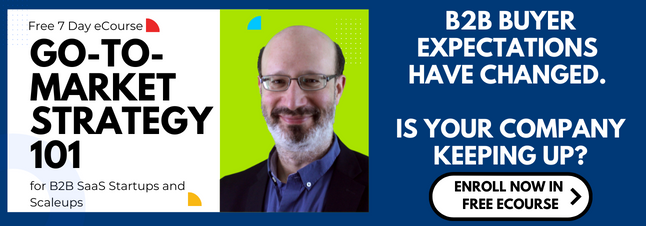While most of my career experience is in digital marketing and sales strategy that helps grow tech startups, I majored in economics and worked in IT support for Merrill Lynch Global Research early on in my career.
So I approach digital transformation and content strategy to recognize and capitalize on undervalued assets -- mainly the attention that entrepreneurs need to attract the right people, in the right places, at the right time, and in the right context -- and uncover revenue growth opportunities that they’re currently missing.
To recognize and capitalize on this:
- Invest very aggressively in customer insight, so you know your ideal customers better than any of your competitors. Very often, SaaS founders go with their instincts here -- not ideal. Even if you yourself come from a background where you're part of the buyer persona segment, you still need research and data to get a consensus on your buyer persona's specific words they use for describing their goals and challenges.
- Position you and your team as the definitive go-to experts on the goal or challenge that's top of mind for your most important target customers. Now that the self-service digital buyer's journey has become the predominant digital buyer's journey, you and your team must be seen as experts in your space. Without this, you'll face a constant uphill battle with prospects and customers.
- Create super-helpful educational content on topics where the demand for this information is significant, yet the competition for this attention is low to moderate. Consider every question you've ever been asked in person, on calls, in meetings, at conferences, by emails, or in community forums. Every question represents an opportunity to create a content asset that gets you discovered on search engines and social media. If you're not there with the relevant Q&A, one of your competitors will be.
- Prioritize the intersection of your ideal customers' most-pressing capabilities, your company's capabilities, sufficient market demand, and a low-to-moderate degree of competition. To add value to your prospects and customers, you must use the content as a strategic growth engine to educate and build trust at scale. Remember, during the first 90%+ of the buyer's journey, your prospects have zero interest in hearing about how wonderful your SaaS is. Your prospects just know they have goals they're trying to achieve and problems they're trying to solve.
And if you want your content strategy to power more growth in your B2B SaaS startup or scaleup, be sure to enroll now in our free 7-day eCourse: Go-to-Market Strategy 101 for B2B SaaS Startups and Scaleups.



Submit a comment